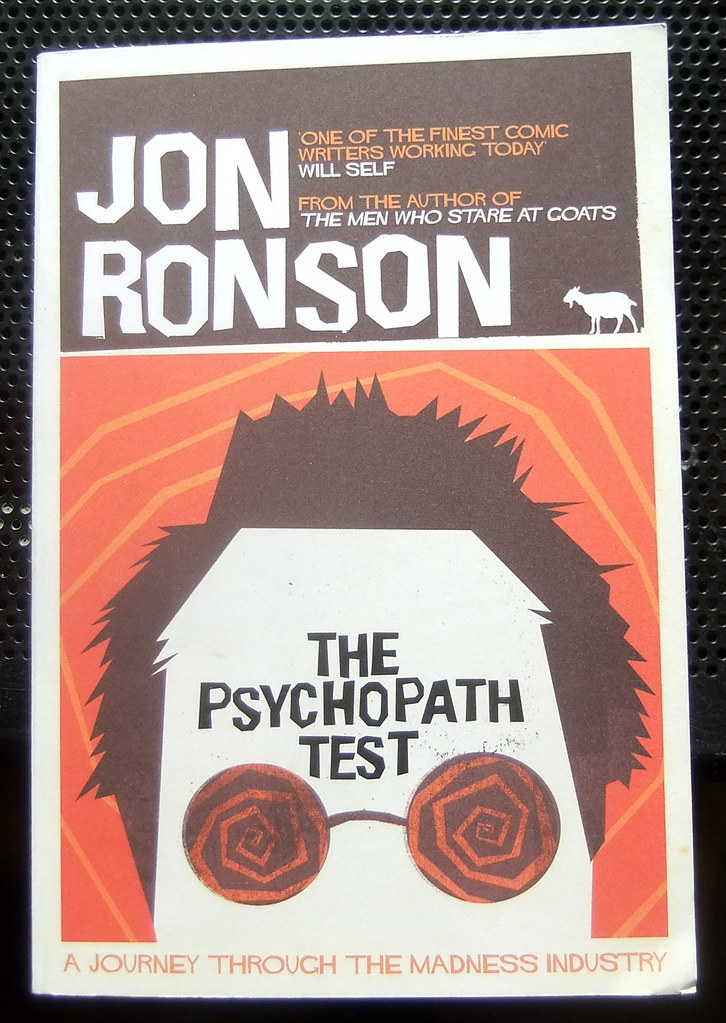
Serial killers and notorious criminals, often characterized by a profound lack of empathy and remorse, have long held a chilling fascination for society. These individuals, whose heinous acts defy comprehension, force us to confront the darkest corners of the human psyche. Their stories, while disturbing, offer crucial insights into the complexities of psychopathy and the enduring challenges faced by law enforcement and the justice system in the face of such depravity.
The public is often drawn to these compelling narratives, not out of glorification, but perhaps in an attempt to understand the incomprehensible or to seek reassurance in the pursuit of justice. The very idea that such extreme narcissism and cruelty can exist within an individual, often hidden beneath a veneer of normalcy, is both terrifying and a stark reminder of the importance of vigilance. Through meticulous detail and a focus on the pursuit of justice, we embark on an investigation into some of the most depraved minds to have ever walked the earth.
From those who inspired iconic horror characters to the seemingly polite individuals who evaded detection for years, the cases we examine here are rich with factual accounts of crimes, investigations, and the psychological aspects of the perpetrators. These are not mere tales, but meticulously reconstructed histories that highlight the relentless efforts to bring these individuals to justice and the lasting impact they left on the communities they terrorized. We will now turn our attention to the first seven of these enigmatic figures.

1. **Ed Gein, The Butcher of Plainfield**Ed Gein, a name that sends shivers down the spine of anyone familiar with true crime, is perhaps most infamous for inspiring three of the most iconic fictional horror characters of all time: Norman Bates from “Psycho,” Leatherface from “The Texas Chainsaw Massacre,” and Buffalo Bill from “The Silence of the Lambs.” This alone speaks volumes about the grotesque nature of his crimes and the indelible mark he left on popular culture. Operating between approximately 1945 and 1957 in isolated Plainfield, Wisconsin, Gein engaged in a horrifying spree of grave robbing and murder.
His capture in 1957 brought to light a macabre scene that shocked the nation. Gein was found to have collected women’s bodies, not merely for burial, but to decorate his isolated farm with their remains. Beyond decoration, he also fashioned various items of clothing from human skin, a detail that underscores his extreme and disturbing psychopathology. This ritualistic desecration and use of human remains showcased a profound detachment from societal norms and any semblance of empathy.
Gein’s case serves as a chilling example of severe psychological disturbance, demonstrating how a seemingly quiet individual living in isolation could harbor such depraved fantasies. His actions were not driven by typical motives but by a deeply twisted compulsion, making him a unique and terrifying figure in the annals of criminal history. He eventually died in a mental institution in 1984, leaving behind a legacy of horror and an enduring fascination with the dark depths of the human mind.
Read more about: Beyond the Screen: 13 Chilling Horror Films You Won’t Believe Are Rooted in Real-Life Terrors

2. **Charles Manson, The Cult Leader**Charles Manson stands as one of the most infamous cult leaders in history, a figure whose name is synonymous with psychopathic manipulation and horrifying violence. In the tumultuous 1960s, Manson leveraged his cunning to gather a devoted following, twisting their minds with a perverse ideology that culminated in one of the most notorious murder sprees the world has ever witnessed. His ability to exert such control over others highlights a classic psychopathic trait: superficial charm coupled with profound manipulative prowess.
The Tate-LaBianca murders, orchestrated by Manson and carried out by his followers, sent shockwaves across the globe. These horrific acts extinguished the lives of several innocent individuals, including director Roman Polanski’s pregnant wife, Sharon Tate, and coffee heiress Abigail Folger. The sheer brutality and senselessness of these crimes, coupled with the cult’s bizarre motivations, captivated and horrified the public for decades, spawning countless books, movies, documentaries, and podcasts.
Manson’s case is a stark illustration of how psychopathic tendencies, when combined with cult dynamics, can lead to catastrophic consequences. He not only murdered people himself but convinced others to commit unspeakable atrocities on his behalf, demonstrating a chilling ability to erode the moral compass of his admirers. Though initially sentenced to death, his sentence was commuted to life imprisonment after California abolished the death penalty. Charles Manson died in prison in 2017, but the shadow of his influence and the questions his crimes raised continue to haunt the collective consciousness.
Read more about: Unraveling the Enigma: A Deep Dive into the Psychology of the World’s Most Notorious Cult Leaders

3. **Ted Bundy, The Charming Predator**Ted Bundy’s name has become practically synonymous with the terms serial killer and psychopath, a grim testament to the scale and nature of his horrific crimes. He possessed a chillingly deceptive quality: a sly and charming demeanor that served as a polished veneer, which he masterfully used to lure his numerous unsuspecting victims. This superficial charm is a defining characteristic of psychopathy, allowing individuals to operate undetected in plain sight, blending seamlessly into society while harboring monstrous intentions beneath.
Bundy’s reign of terror spanned across the United States in the 1970s, claiming the lives of at least 30 young women, though the true number is speculated to be higher. For years, authorities struggled to apprehend him, a task made incredibly difficult by the very nature of his deceptive personality. No one believed that such an “upstanding” young man, with his good looks and charisma, could be capable of such unimaginable evil. This highlights the inherent dangers of psychopathy, as the ability to maintain a facade of normalcy enables them to evade capture for prolonged periods.
His case gained further notoriety due to his necrophiliac tendencies, a dark aspect of his psychopathy that horrified the public. Even his own lawyer described him as “heartless evil,” a stark recognition of the profound lack of empathy and remorse that defined him. Bundy’s manipulative abilities extended even to representing himself in court, charming some observers despite the horrific nature of his acts. His relentless pursuit of appeals, often offering information on unsolved cases, showcased his cunning even in the face of his impending execution. Ted Bundy was eventually executed in 1989, closing a chapter on one of America’s most chilling predators.
Read more about: Beyond the Headlines: Exploring the Dark History and Enduring Legends of Serial Killers

4. **Richard Ramirez, The Night Stalker**Richard Ramirez, infamously known as “The Night Stalker,” unleashed a reign of terror upon Los Angeles in the 1980s that left an indelible mark of fear and horror. His crimes were characterized by their sheer brutality and their seemingly random nature, as his victims ranged widely in age from nine to eighty-three, with no particular preference for gender. This indiscriminateness made his attacks especially terrifying, as no one felt safe from his insidious presence.
Ramirez’s motives were rooted in a disturbing fascination with death, which he openly linked to Satanic-inspired killings. This dark ideology fueled his horrific acts, separating him from many other serial offenders who might have more conventional, albeit still depraved, motivations. While his fascination with death was a driving force, the context mentions that his upbringing likely played a role in his development, specifically highlighting that at just 11 years old, he witnessed his cousin commit murder. Such early exposure to extreme violence can profoundly shape a developing psychopathic mind.
His rampage included home invasions, murders, and sexual assaults, all carried out with a callous disregard for human life and suffering. The terror he inflicted led to widespread panic across Southern California, with citizens taking extraordinary measures to protect themselves. Ramirez’s case underscores the raw, unadulterated cruelty that can emerge when psychopathic tendencies manifest. He died of natural causes in 2013, but the memory of his brutal campaign continues to serve as a stark reminder of the random, devastating impact of psychopathic violence.
Read more about: A Journey Through Dark History: Exploring 13 Famous Psychopaths and Serial Killers

5. **Jack the Ripper, London’s Unidentified Terror**London’s East End in the late 1800s was gripped by an unprecedented terror, personified by the enigmatic figure known only as Jack the Ripper. To this day, his true identity remains shrouded in mystery, contributing to his world-famous and chilling legend. Unlike many other serial killers who eventually face justice, Jack the Ripper vanished into the shadows, leaving behind a legacy of unsolved murders and profound societal fear. His crimes were not merely killings; they were acts of extreme mutilation and disembowelment, primarily targeting prostitutes.
What little is known about Jack the Ripper points to a severe hatred of women, particularly those in the sex trade. This intense misogyny has led some theorists to speculate about his background, suggesting that his mother might have been a prostitute, fueling a deep-seated rage that found its outlet in unspeakable violence. The meticulous and gruesome nature of the mutilations points to a disturbed mind, likely exhibiting profound psychopathic traits such as a complete lack of empathy and a sadistic pleasure in inflicting pain.
He deliberately left his victims on full display on the street, ensuring that police and citizens would discover their horrific fates. This act of public exhibition was a deliberate statement, a challenge to authority, and a terrifying assertion of power, a common trait in psychopathic offenders seeking to dominate and control. The Ripper’s reign continues to fascinate criminologists and historians, representing a historical benchmark for criminal investigation and a haunting reminder of unchecked evil that eluded justice.

6. **Albert DeSalvo, The Boston Strangler**Albert DeSalvo, infamously known as “The Boston Strangler,” terrorized the city of Boston in the early 1960s, claiming the lives of women through a chillingly simple yet effective modus operandi. He would often use a ruse to gain entry into his victims’ front doors, capitalizing on trust and vulnerability, a classic manipulative tactic employed by psychopaths to overcome initial resistance. Once inside, he would proceed with his horrific acts, primarily strangulation.
DeSalvo exhibited classic warning signs of a psychopath from an early age, specifically engaging in the torture of animals. This disturbing behavior is often a precursor to later violence against humans, signaling a severe lack of empathy and a developing capacity for cruelty. As he matured, his extreme misogyny escalated, fueled by difficult and likely traumatic relationships with the female figures in his life. This progression of hatred underscores the psychological underpinnings of his violent tendencies, demonstrating how personal grievances can twist into widespread destruction.
His crimes plunged Boston into a state of panic, as women across the city lived in fear of the unseen killer. The investigation was extensive and complex, highlighting the challenges law enforcement faces when confronted with a cunning and elusive predator. DeSalvo was eventually stabbed to death in prison in 1973, ending the life of a man whose psychopathy had manifested in a horrifying spree of violence against innocent women, leaving a legacy of fear and a grim case study in criminal psychology.
Read more about: Explore the Legacy of Tony Curtis Through His 15 Best Films

7. **Jeffrey Dahmer, The Milwaukee Cannibal**Jeffrey Dahmer, a name that sends chills down the spine, captivated and horrified the world not only for the gruesome nature of his crimes but also for his seemingly polite and unassuming demeanor. This outwardly normal appearance allowed him to evade police detection for an extended period, simply because authorities believed whatever excuses he fed them, a testament to his manipulative abilities and the public’s reluctance to see evil in plain sight. This capacity for deception is a hallmark of psychopathy, enabling individuals to operate under the radar while committing heinous acts.
Dahmer is most famous not just for being a killer, but for his horrific acts of cannibalism and necrophilia. His crimes involved luring young men back to his apartment, where he would murder, dismember, and consume parts of their bodies. The discovery of his monstrous activities came when authorities finally raided his home, revealing a scene of unspeakable horror, including human heads found in his refrigerator. The meticulous and deliberate nature of his acts, coupled with his complete lack of remorse, painted a stark picture of extreme psychopathy.
His case brought to light the disturbing reality of how deep psychological aberrations can run, leading an individual to commit acts that are almost beyond human comprehension. Dahmer’s ability to compartmentalize his life, maintaining an outward appearance of normalcy while perpetrating such atrocities in secret, speaks to the profound emotional detachment characteristic of psychopaths. He was murdered in prison in 1994, but his story remains a profoundly disturbing chapter in criminal history, continuously analyzed by psychologists and criminologists seeking to understand the darkest manifestations of the human mind.
Continuing our grim exploration, we now turn our attention to additional notorious psychopaths whose actions have etched a dark legacy into history, uncovering the psychological intricacies that drove them, their insidious influence on the legal system, and the enduring impact of their crimes on society. These are stories not just of horror, but of the relentless pursuit of justice and the continuous human endeavor to comprehend the incomprehensible.
Read more about: Beyond the Headlines: Exploring the Dark History and Enduring Legends of Serial Killers

8. **The Zodiac Killer, The Coded Terror**Like the elusive Jack the Ripper, the true identity of the Zodiac Killer remains shrouded in an unsettling mystery, yet his crimes are globally infamous. Unlike the Ripper, however, the Zodiac actively engaged with the public and authorities, refusing to vanish silently into the shadows. His reign of terror, primarily in California during the late 1960s and early 1970s, was made sensationally terrifying by his unique and chilling method of communication.
The Zodiac reveled in the cat-and-mouse game he played with various media outlets, taunting them with intricate codes and riddles that defied easy deciphering. These communications not only escalated public panic but also highlighted his profound psychological detachment and a desire for control over the narrative of his heinous acts. Each letter was a calculated move, designed to assert dominance and further the chilling legend he was meticulously crafting.
Despite extensive investigations and countless theories, no trace of the killer has been found since his final letter to the press in 1974. This perpetual anonymity only deepens the terror, allowing his shadow to loom large over true crime history. Even without the benefit of a psychological examination, his actions undeniably showcased the hallmark lack of empathy characteristic of a psychopath.
The enduring mystery of the Zodiac Killer underscores the profound challenges law enforcement faces when confronted with an adversary who actively manipulates public perception and revels in their own cunning. His case remains an open wound in the annals of criminal history, a stark reminder of the elusive nature of some of the most depraved minds.
Read more about: Top Horror Films That Will Terrify You Even More Knowing They’re Based on Unbelievable True Events

9. **Vlad the Impaler, The Real Dracula**Centuries before Bram Stoker penned his iconic novel, a 15th-century Transylvanian ruler struck fear into the hearts of his enemies and subjects alike, becoming the historical basis for the Dracula myth. Vlad III Dracula, better known as Vlad the Impaler, was a figure of extreme brutality and bloodthirsty ruthlessness, far surpassing any fictional monster in his capacity for real-world horror. His methods of punishment were notoriously cruel, designed to instill absolute terror.
As his chilling moniker suggests, Vlad’s preferred method of execution was impalement, a slow and agonizing death that served as both a barbaric form of capital punishment and a stark warning to any who dared defy him. He would often leave his victims, sometimes numbering in the thousands, impaled on stakes and grotesquely displayed outside his castle walls. This public exhibition of suffering was a calculated act of psychological warfare, ensuring maximum visibility and psychological impact.
Estimates of his victims are staggering, with roughly 20,000 people believed to have been impaled, contributing to a total death toll of approximately 80,000. Such widespread, systematic cruelty points to a profound lack of empathy and a deeply disturbed psyche, willing to inflict unimaginable pain to maintain power. His reign was a testament to how psychopathic traits, when combined with absolute authority, can lead to widespread devastation.
Vlad the Impaler’s legacy endures not just as a fascinating historical footnote or the genesis of a gothic legend, but as a chilling example of a ruler whose psychopathic tendencies translated into a reign of terror, demonstrating the capacity for extreme human brutality under the guise of governance.
Read more about: A Journey Through Dark History: Exploring 13 Famous Psychopaths and Serial Killers

10. **Dennis Rader, The BTK Killer**For decades, Dennis Rader terrorized Wichita, Kansas, operating under the ominous moniker “BTK,” an acronym he coined himself, standing for “Bind, Torture, Kill” – a chilling description of his modus operandi. Like the Zodiac Killer, Rader derived perverse satisfaction from playing games with the press, sending taunting letters that fueled a local and national panic. His crimes, which spanned from 1974 to 1991, remained unsolved for years, a testament to his cunning.
However, Rader’s game of cleverness ultimately led to his downfall. In 2005, after a prolonged period of silence, he renewed contact with the media, sending a floppy disk that investigators were able to trace back to his church, where he was an active and seemingly upstanding member. This seemingly innocuous digital breadcrumb finally unmasked the monster who had meticulously hidden in plain sight.
The revelations about Rader shocked everyone, as he had successfully maintained a chilling dual life. He was a married man, a father, an active church council president, and even a Boy Scout leader – all while secretly engaging in the ritualistic sexual thrill and fantasy of bondage scenarios that culminated in the murders of 10 people, including an entire family. His ability to compartmentalize these heinous acts from his public persona is a classic hallmark of psychopathy.
Rader’s case profoundly illustrates the extreme lack of empathy that defines psychopaths, allowing them to inflict unimaginable suffering without a flicker of remorse while simultaneously leading seemingly normal lives. He is currently incarcerated in Kansas, his capture a significant victory for the pursuit of justice, but his story remains a stark reminder of the insidious nature of hidden evil.
Read more about: A Journey Through Dark History: Exploring 13 Famous Psychopaths and Serial Killers

11. **Elizabeth Báthory, The Blood Countess**Though her name may not be as universally recognized as Bundy’s or Dahmer’s, Elizabeth Báthory has long been enshrined in history as possibly the most prolific female serial killer. This Hungarian countess, active in the late 16th and early 17th centuries, is infamous for allegations of unspeakable cruelty. It is said she murdered at least 600 young girls, believing that their torture and blood would help her retain her youth, leading to gruesome tales of her bathing in and drinking the blood of her victims.
Her alleged sadistic tendencies and the profound pleasure she reportedly took in inflicting pain are deeply consistent with psychopathic traits. The sheer scale and systematic nature of the alleged murders paint a disturbing portrait of an individual consumed by extreme depravity and a complete disregard for human life. Her position as a high-ranking noblewoman, however, afforded her a unique protection from the legal system of her time.
Because of her social standing, Báthory was never officially brought to trial for her alleged crimes. Instead, she was confined to house arrest until her death in 1614, a stark contrast to the fate of common criminals. However, it’s crucial to note that historical narratives are complex; a book released in 2023, “The Blood Countess,” presented a counter-narrative, claiming the accusations were false and that Báthory was, in fact, a book printer, feminist, and educator who used her home to teach young women.
Regardless of the ongoing historical debate, the pervasive legends surrounding Báthory highlight the chilling fascination with psychopathic cruelty, particularly when cloaked in power and privilege. Her story, whether fact or embellished myth, continues to serve as a haunting testament to the potential for human depravity and the historical complexities of justice.
Read more about: Beyond the Headlines: Exploring the Dark History and Enduring Legends of Serial Killers

12. **David Berkowitz, The Son of Sam**In the mid-1970s, New York City was gripped by a terrifying panic as a serial killer, who dubbed himself “Son of Sam,” began a spree of random shootings. David Berkowitz, the man behind the moniker, predominantly targeted young women with long brunette hair, using a .44-caliber revolver. The unpredictability of his attacks — no one knew when or where he would strike next — created an atmosphere of widespread fear and made him one of the most terrifying figures in the city’s history.
Berkowitz’s reign of terror showcased a chilling impulsivity, a characteristic often observed in psychopathic criminals. His crimes were sudden and unprovoked, as he would often approach parked cars and open fire without warning, leaving a trail of death and injury. Before his notorious killing spree, he had also engaged in serial arson, demonstrating a pattern of escalating antisocial behavior that went unchecked.
He ultimately killed six people and wounded seven others, leaving an indelible mark on the city’s psyche. After his capture, Berkowitz famously claimed his actions were driven by demonic possession, a narrative that, while likely a ploy for an insanity defense, exemplifies the elaborate stories psychopaths can construct to rationalize their horrific deeds or manipulate the legal system.
The case of David Berkowitz illustrates the profound impact of impulsive violence and the complex psychological underpinnings of individuals who commit such random acts of terror. Interestingly, after years in prison, Berkowitz has reportedly become a born-again Christian and now acts as a peer mentor for fellow inmates, prompting ongoing discussions about the potential for change, or the cunning adaptation of, individuals historically linked to psychopathy.

13. **Albert Fish, The Brooklyn Vampire**Albert Fish, a ferocious serial killer operating in the early 1900s, etched his name into the annals of criminal history through acts of profound depravity that continue to horrify. Like Jeffrey Dahmer many years later, Fish was a cannibal, but his monstrous acts extended far beyond. He became infamous not only for his horrific crimes but for the chilling manner in which he relished and recounted them.
What truly set Fish apart and cemented his status as especially horrifying and depraved was his macabre practice of sending letters to his victims’ families. In these meticulously crafted and utterly callous communications, he would describe in extreme, graphic detail the terrible things he had done to their loved ones. These letters were not born of remorse but of a sadistic pleasure in inflicting prolonged suffering, both physical and psychological.
One such agonizing letter, filled with the gruesome specifics of a child’s murder and subsequent cannibalization, ultimately led to his capture. This critical piece of evidence provided the breakthrough authorities needed, confirming the unthinkable and bringing a halt to his reign of terror. It was a testament to the fact that even the most cunning and disturbed minds can make missteps that lead to their undoing.
Fish was eventually executed in 1936, bringing an end to the life of a man whose psychopathy manifested in the darkest possible ways. His legacy remains a disturbing chapter, a chilling reminder of the depths of human cruelty and the profound impact of such unadulterated evil.
Read more about: Beyond the Headlines: Exploring the Dark History and Enduring Legends of Serial Killers

14. **H.H. Holmes, America’s First Serial Killer**In the late 1800s, America witnessed the emergence of its first known serial killer, a figure of chilling intellect and calculated depravity who went by the name H.H. Holmes. A qualified doctor and a cunning architect, Holmes orchestrated a horrifying scheme in Chicago, designing and constructing a massive hotel that would later be infamously known as the “Murder Castle.” This architectural marvel was built with one insidious purpose: to murder and conceal his victims.
The Murder Castle was a labyrinth of horrors, replete with secret passageways, soundproof rooms, hidden chutes to the basement, and even gas chambers and a crematorium – all meticulously planned by Holmes. Only he knew the intricate layout of the trap doors and hidden spaces, allowing him to lure unsuspecting guests and employees into his clutches, never to be seen again. His methods were not merely violent; they were methodical, efficient, and deeply manipulative.
Holmes was not only a pioneer in American serial murder but also an archetypal psychopath, displaying calculated cruelty and an profound indifference to human suffering. His story, a blend of architectural genius and monstrous intent, captivated the nation and later inspired Erik Larson’s bestselling non-fiction book, “The Devil in the White City,” further cementing his place in the darkest corners of American history.
His ability to lure victims with a veneer of charm and charisma before subjecting them to unspeakable horrors is a chilling testament to the manipulative tactics often employed by psychopaths. Holmes’s case serves as a haunting reminder of the potential for evil to masquerade as normalcy, lurking beneath a polished facade in the most unexpected places.
Read more about: A Journey Through Dark History: Exploring 13 Famous Psychopaths and Serial Killers

15. **John Wayne Gacy, The Killer Clown**John Wayne Gacy, infamously known as “The Killer Clown,” presented himself as a seemingly ordinary contractor and a pillar of his community, yet he secretly led a horrifying double life. Between 1972 and 1978, Gacy committed horrific acts of violence against young men and boys, luring them to his home before sexually assaulting and murdering them. His monstrous campaign of terror claimed the lives of at least 33 victims.
The sheer scale of Gacy’s crimes was amplified by his macabre method of concealment: he buried most of his victims in the crawl space beneath his suburban Chicago home, a horrifying discovery that shocked the nation. His case is particularly notable for the extreme violence he inflicted and his complete and utter lack of remorse, even when confronted with the irrefutable evidence of his deeds.
Gacy’s ability to maintain a respectable public image was a chilling testament to his psychopathic cunning. He was active in local politics, owned a successful construction business, and famously entertained children at parties dressed as “Pogo the Clown.” This profound capacity to compartmentalize his violent tendencies – committing brutal murders and then returning to his daily life without apparent distress or guilt – is a quintessential hallmark of psychopathy.
The legacy of John Wayne Gacy endures as a profoundly disturbing chapter in criminal history, a stark illustration of how the darkest evil can lurk beneath a veneer of normalcy and charm. His story serves as a constant reminder of the vigilance required to unmask individuals whose psychopathic traits enable them to cause unimaginable suffering while operating undetected in plain sight.
These stories, from the enigmatic Zodiac Killer to the depraved John Wayne Gacy, serve as stark reminders of the pervasive presence of psychopathy throughout history and across continents. They compel us to confront the darkest aspects of the human condition, forcing us to ask how individuals can possess such an extreme lack of empathy and a capacity for such profound cruelty. The pursuit of justice in these cases, often arduous and prolonged, highlights society’s relentless effort to bring these individuals to account and to understand the psychological complexities that drive their heinous acts. While the full depths of the psychopathic mind may forever remain a chilling enigma, each investigation brings us closer to comprehending the patterns, warning signs, and lasting impact of those whose crimes have stunned nations.”



